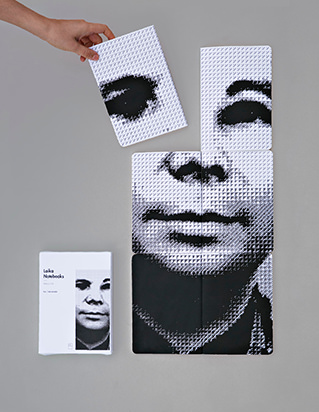FABIEN ZOU: “Caribbean Poetry also involves clothing”
Fabien Zou is a French designer from Guadeloupe. In 2018 he launched his eponymous brand through which he shares his personal story. In this interview,, we discovered a sensitive soul who creates meaningful fashion at the crossroads of Caribbean poetry and European tailoring.
Where does your passion for fashion come from?
Indirectly, it comes from my mother. She has always liked to dress up, she has always liked to wear makeup. My mother doesn’t leave the house if she’s not wearing lipstick. Even to throw away the garbage ! (laughs)
When I was young, I was able to experiment with a lot of things thanks to her and I discovered this passion for dressing myself, and for dressing others.
And then what pushed you to create your own brand?
I was part of a Caribbean folk dance group and my grandmother often came to my house to make costumes. One day I decided to go for it, and at the age of 16 I took over the dance crew, and I did all the choreography and all the costumes.
I started by making a t-shirt out of leatherette, because it was fashionable, with Kanye West. I did a mini collection in London a few years ago and people’s response and feedback made me want to do more, and since then I’ve continued.
What does your brand represent ?
I haven’t gotten to where I really want to be yet. But I want people who see my brand to associate it with Caribbean poetry. With the Caribbean touch being brought by materials, colors inspired by the West Indies and pieces that are both very unstructured but still minimalist completing its universe.
The idea of Caribbean poetry that you evoke also reminds me of Maximilian Davis and I think that your inspirations meet on this theme. How would you define that, for someone who doesn’t necessarily know the Caribbean?
It’s very roots and at the same time very sophisticated. Bourgeois with a mix of culture, flavors, and sounds. If I were to imagine a film of Caribbean poetry, I would visualize a scene with a woman in the market buying fruit with her gold ornaments and her headdress, just as I would picture a scene in the jungle with people drumming and dancing barefoot.
Caribbean poetry is rooted in a very strong history linked to slavery. But through my work, it also carries something softer. My references call on prominent figures who tell their stories. And there is also this desire to “stand up for something”.
Caribbean people are often told “You are descendants of slaves, you are African.” Yes, I am descended from slaves, but today, I assert myself as Caribbean because the mix of cultures between India, Europe, and Africa has given birth to a history that is very present. So that’s how I see Caribbean poetry.

How do you manage to create a bridge between honoring your heritage and your culture while breaking the rules of dressing ?
I think above all that my Guadeloupean heritage inspires my creation through its music, its language and its traditional costumes. When I make a collection, I base myself on two things: meaning and interpretation. I try to figure out how I can interpret certain elements of my aesthetic.
As for making these connections, I think I’m getting better and better at it. I try to create a sense of ease, a freedom to do what you want with each piece. I sometimes design silhouettes that are a little more fitted for men or wider for women. I don’t want to make a fluid collection either, but it’s true that the pieces I’ve made can be worn by either men or women.
In your latest collection, Persona, you wanted to reinforce this idea of multiculturalism and celebration of individuality. What was your creative process to build this collection? What is special about this collection?
Between 2018 and 2022 a lot of things happened, I went through very sad emotional moments. I questioned my life a bit. I also traveled a lot.
I took a trip to Rio and got really inspired by the collection. All the pieces in this collection mean something about me, and how I have felt over the last few years.
So there are both simple pieces that remind us of what I wore on a daily basis, but also very unusual things. The bodysuit with all the cut-outs for example is inspired by women putting tape on their breasts in Brazil to get tan lines. When I saw that, I said to myself “they’re crazy!” But I was inspired by it and I incorporated it in my own way.
It’s also a tribute to my close family, to the women who have been there for me, those who have shaped the person I am today.
Who do you design for?
I design mainly for people in my community. Every outfit I make, I always imagine it on a black person, and more particularly women because in the fashion world, I’m under the impression that black women are not highlighted, that they are used for diversity purposes because it’s the trend, but otherwise they are left aside. With my brand, I want to show how I picture my black woman, how she is.
We can say whatever we want, but we need to see ourselves represented.

What are the main challenges you face in the fashion industry?
The first challenge is making a name for yourself, and then getting people to make a purchase, which comes with time.
Otherwise, a major problem I’m faced with at the moment is last minute demands from stylists who want pieces for the next day. I live in Italy and I receive a lot of requests for shipments to London, and it’s more complicated now because of Brexit.
But other than that, in fashion fashion, I’m a bit in my bubble, let’s say, I don’t participate in events such as Fashion Week, or whatever. I create my art, and when I’m ready to release it, I release it.
Does social media play a big role in your brand growth ?
Social media these days is great. If you have a project, Instagram is the best tool you can use, everything is at your fingertips. Although I think you have to use it well, so as a lookbook at first. After that, you have to get out there and meet as many people as you can within your audience. Social media is nice and all, but you also have to create a physical connection.
At first I just wanted to launch my brand on social media but my friends who work in marketing told me that I absolutely had to do an event etc. And it’s true that when I did my event in Amsterdam for Persona, the impact it had would not have been the same as if I had just posted a few pictures online.
What do you hope to accomplish in the future with your brand
in the future?
I hope to be independent, and to be able to dress great artists. And I think it’s going to happen very quickly.
[Since our interview, Fabien has designed and produced Aya Nakamura’s dancers’ stage outfits on her world tour, DNK]
Images curtesy of Fabien Zou











Leave a Reply